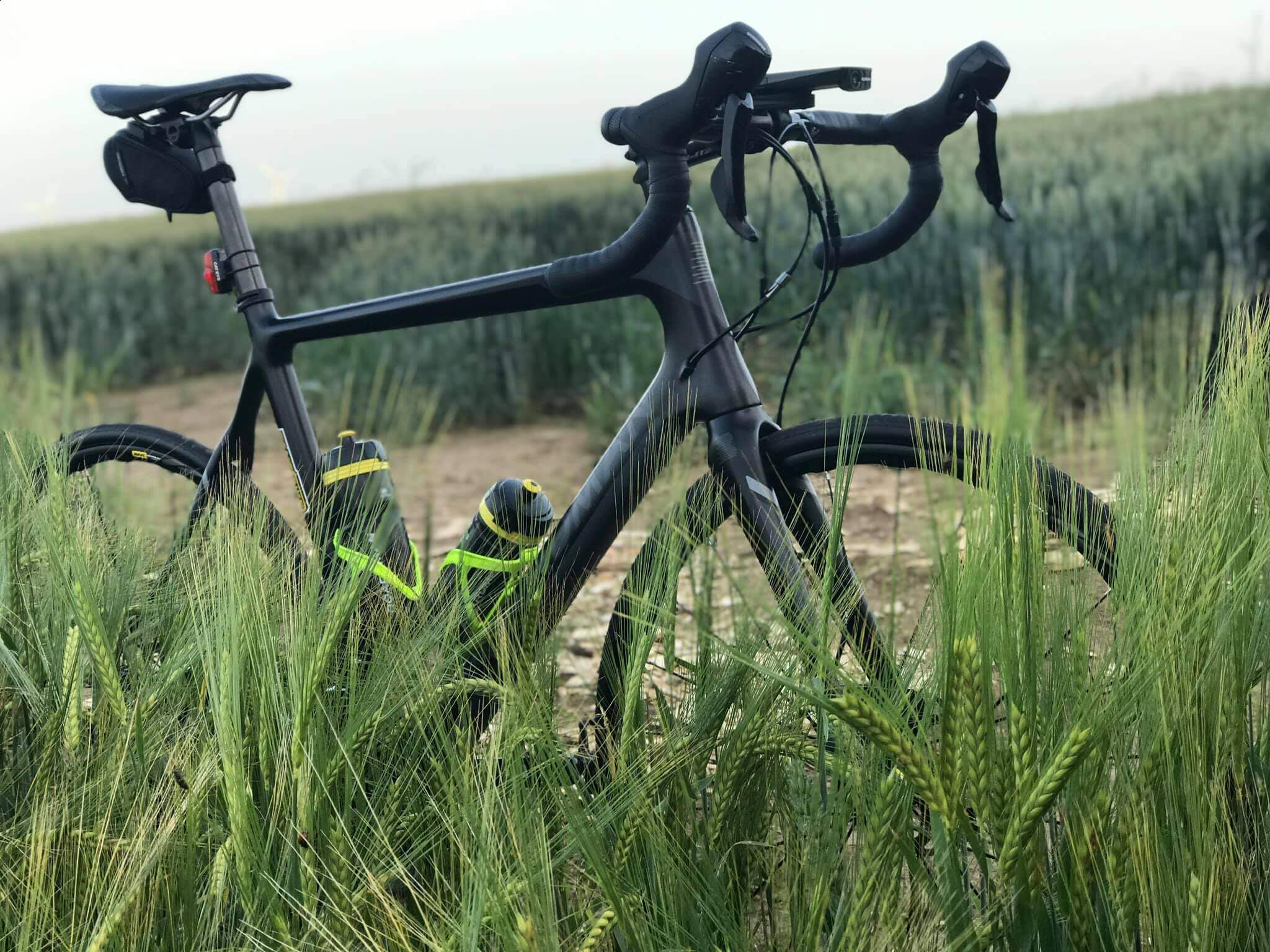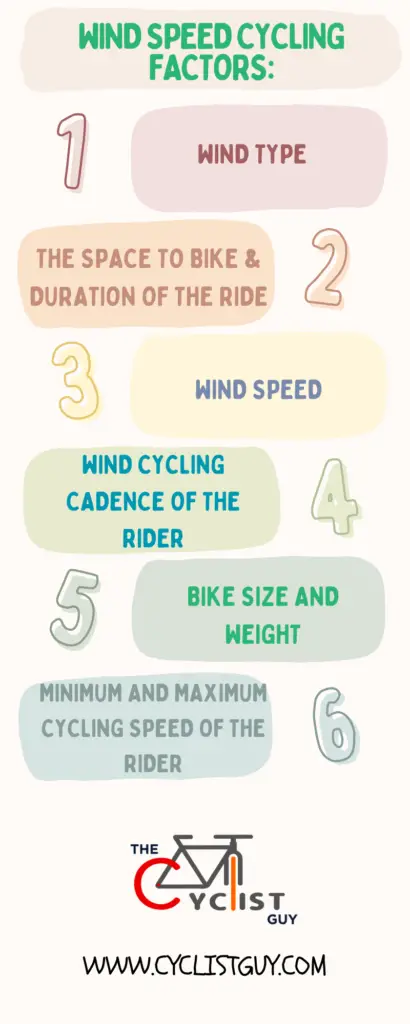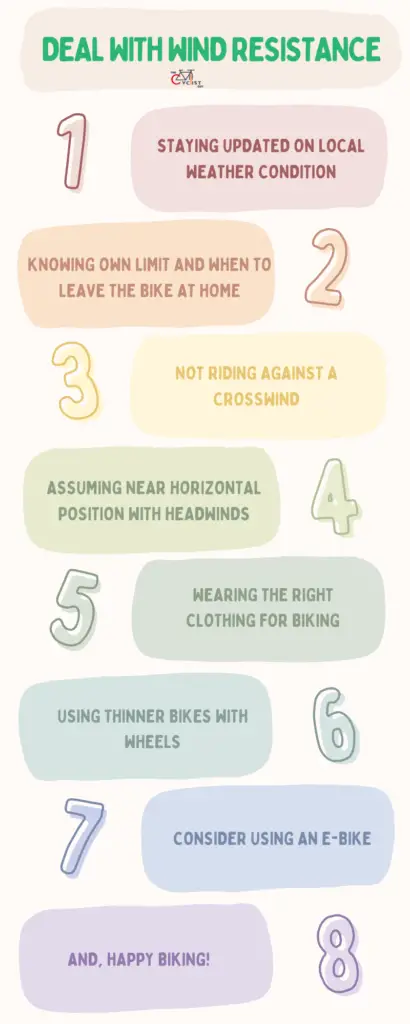How Much Wind Is Too Much for Cycling 75%?

As an affiliate, we may earn from qualifying purchases. We get commissions for purchases made through links on this website. You can read more on our Affiliate Disclaimer here.
The wind today was so hectic that I had a wet towel with me and if I’d throw it on the carrier, it would be completely dry within seconds! Unfortunately, this was too windy to cycle for me as a competitive cyclist.
By the time I was done with 75% of my century ride, I was completely bushed and only at a speed of 24.6 km/h!
I know, I know, this is not a bad speed per se but it was far from my personal best of 38-41 km/h! And it’s all because of the wind.
So after finishing my last flapjack and going back to finish the last 25 km, I vowed to find out more about headwind and warn the other cyclists about it.
After all, I cannot be the only one who feels this way about cycling in the wind! And while we are at it, let’s find out what wind speed is dangerous for cycling. Spoiler alert, It varies!
So let’s dive deep into this to analyze how much wind is too much for cycling!
Wind Direction
To figure out exactly when is it too windy to cycle, we should know how wind affects your cycling. There are three main types of wind direction:
- At your back (Tailwind)
- In your face (Headwind)
- On your side (Crosswind)
Tailwind
Honestly, it is a blessing. With the wind at your back, it will feel like you are riding an e-bike, as the wind pressure will propel you forward without you having to pedal as hard.
You can easily see significant increases in speed in a tailwind. If you struggle to reach 15 mph on your bike on a typical day, then with the tailwind, you’ll find it a breeze to do so (I love my puns!).
However, unlike an e-bike, you cannot control your acceleration and deceleration in the wind.
If you’re not cautious, you might end up speeding too much which, at the least, throws you off your game, and, at worst, leads to injury.
Think of the tailwind as a downward slope. I normally don’t pedal much, if at all, when going down a slope. Depending on the decline of the slope, pedaling would be very dangerous.
Similarly, in a strong tailwind, be careful of other pedestrians and vehicles on the road. If it is off the road, there is room for excitement, as nothing beats a good tailwind in free and unobstructed routes.
Headwind
If the tailwind is a downward slope, the headwind is an upward slope.
This means two things:
a) You struggle to reach the same speed as you would have on a typical day, and certainly as during a tailwind.
b) You struggle to control and pedal your ride. It’s like pedaling in high gear or turning the tension high on an exercise bike.
So, how much does headwind affect cycling? As a rule of thumb, headwinds tend to decrease the speed at least by half of the wind speed.
So if you have an average speed of 20 mph, cycling in 10 mph wind would reduce you to a speed of 15 mph.
To add to all that, if the headwind is strong enough, you may also get things in your eye, or at least be buffeted by the wind so much that you can’t look forward at ease, if at all.
Crosswind
Yeah, headwinds will slow you down annoyingly. But that’s almost the least of your concerns in a crosswind. The crosswind is potentially the most dangerous of all three wind directions.
Why? Because you might quite literally be picked up off the road and flung away by the wind.
Yes, really. Accidents have happened like this in strong crosswinds. While a crosswind doesn’t directly mess with your speed, as it isn’t in your face, it can still obstruct your pedaling and force you to increase your effort.
In short, the tailwind is a blessing, the headwind is a nuisance, and the crosswind is a menace. This also works as a speed factor for most bikes and bikers!
However, this is an oversimplification without taking into account the amount of wind. If the wind speed is negligible, such as below 10 mph, then it will be almost a non-existent factor.
In wind speeds of 25 mph or 30 mph, however, you better stay at home unless it’s an essential ride. But at wind speeds of 40 mph or more?
Even driving is dangerous at that point. And you’d be prone to be buffeted not only by the gales but also by debris being carried by the wind.
The Wind Speed Cycling Relationship works beyond just simple milage. There are lots of factors involved such as:
- Wind Type
- The Space to Bike & Duration of the Ride
- Wind Speed
- Wind Cycling Cadence of the Rider
- Bike Size and Weight
- Minimum and Maximum Cycling Speed of the Rider

Let’s see how these play out in different wind situations to determine how much wind is too much for cycling for you.
10 mph Wind Cycling
Generally, A 10 mph wind speed shouldn’t worry you at all. If you are a beginner cyclist, then of course be wary.
An average person’s usual mile-per-hour speed, meaning how many miles he can bike in an hour will be a key factor here. But other than that, a 10 mph headwind shouldn’t be a significant problem on its own.
15 mph Wind Cycling
15 mph is a benchmark when it comes to cycling speeds. A person who can sustain 15 mph is considered an intermediate cyclist. Similarly, a wind speed of 15 mph is considered a sufficient wind speed that causes trouble (unless it’s a tailwind).
Is 15 mph wind cycling dangerous? Potentially. If you’re a beginner or intermediate cyclist, then you’ll struggle against a 15 mph wind speed.
Accidents may occur due to negligence or intimidation of the wind. However, by itself, a 15 mph wind speed should not be a hazard.
So, is 15 mph wind strong for cycling? Again, it depends as different people have different ceiling points when it comes to cycling in the wind. Some people won’t even cycle if there is a noticeable wind, and it’s good to be cautious.
However, if you are an avid cyclist or need to cycle on a windy day for other reasons, don’t be fearful of a 15 mph wind speed.
Yes, a 15 mph headwind will suck, and you’ll have to push through. Also, be wary of the crosswind, but if you’re lucky enough to get a tailwind, then 15 mph wind cycling is a cruise
20 mph Wind Cycling
Cycling in 20 mph winds is quite a tough prospect indeed. If you, for example, average 17 mph in regular weather conditions (which means you are at least an intermediate cyclist), then you would only reach 7 mph when cycling against a 20 mph headwind using the same effort.
Speed cut by over half!
On the other hand, a tailwind of 20 mph may be an ideal joyride for a cyclist but does possess a risk of losing speed control.
Cycling in 20mph winds blowing in the similar direction you are going will significantly increase your cycling wind speed. A bigger size bike, such as a sturdy 29 inch MTB can be helpful in this case.
But, yes, 20 mph wind cycling is manageable by many cyclists.
But, yes, 20 mph wind cycling is manageable by many cyclists.
How to Deal with Wind Resistance
Now that we know that winds often serve as a hazard to most cyclists, let’s discuss the precautions we can take to safely ride out in the wind.
The basic precautions come down to the following rules:

- Staying updated on local weather conditions
- Knowing your own limit and when to leave the bike at home
- Not riding against a crosswind
- Assuming near horizontal position with headwinds
- Wearing the right clothing for biking
- Using thinner bikes with wheels
- Consider using an e-bike
First of all, know when to say no and stay indoors. If wind speeds reach over 30 mph, you better not step outside.
30 mph itself is not that high of a number, though. To put things into perspective, the speed of Stage 1 hurricanes is at least 74 mph. So, 30 mph is manageable for expert cyclists, but don’t take the risk.
The reason crosswinds are dangerous is that they can knock you over or at least off your balance, resulting in potential accidents or at least a scare.
It is important to not be afraid, though, as being knocked over by the wind is a relatively rare occurrence.
Rather, losing your calm will more often lead to accidents. One thing you can do is to not go against the wind but instead move with the wind, sometimes swaying your bike in the direction of the crosswind.
As for dealing with headwinds, try to assume a near-horizontal posture by leaning forward and down towards your handlebars. Also, keep your elbows engaged instead of bent outwards. The idea is to assume a posture that maximizes aerodynamics. If your body surface area is low, less of the wind will hit you and slow you down.
This also means wearing tight-fitting clothes rather than baggy ones so that the surface area does not increase.
An open jacket, for example, may act as a parachute, cutting down your speed immensely. And try to be careful to protect your pants while biking.
Besides clothes, your bike shape will also naturally affect the amount of drag you experience. Large-rimmed wheels, such as in some efficient road bikes, will bait much of the wind, causing you to not only slow down but also have potential accidents.
I suggest you use thinner wheels if possible.
Is there anything like a winding bicycle? Not really, but mountain bikes are designed heavier, especially ones with suspension. If anything, though, an e-bike is a winding bike.
Especially if you live in rural areas with open fields where winds are sustained, an e-bike will help you tremendously.
It will of course take much of the pedaling strain away, and also sustain good speeds. Headwinds and crosswinds, however, can still affect you. You might want to try wearing goggles to protect your eyes from the wind and flying debris.
Biking Against Wind Workouts
As difficult as it is to ride in the wind, you can use it to your advantage by capitalizing on windy days by working out.
Biking against the wind can certainly serve as a good workout, and the opportunities are endless. Let your imagination run wild.
You can do interval training, such as heading out in a headwind at 90% of your maximum heart rate for 2 minutes, then rest for one, and repeat.
An alternative is to simply go out intentionally at times when it is windier. If you know what time the wind normally picks up in your area, you can schedule your biking against wind workouts at those opportune times.
Cycling Headwind Calculator
Till now, we have been talking casually about wind speeds and bike speeds. But how do we actually get those numbers, and how do we know whether it’s too windy or not to cycle?
Well, getting an exactly accurate number is not at all necessary unless you’re a weather reporter or statistician of some sort.
As for some reasonable estimates, I consider it to be a windy day if the wind speed is over 10 mph. At 20 mph, even small trees will sway. Above that, small branches may break off and potentially hit you.
A Final Word
Did you figure out then that how windy is too windy to cycle? From the above discussion, I would say 30 mph wind is too much for cycling, and wind speeds of 20 mph and above are also worrisome but manageable. If you like to stay on the safe side, don’t venture out in wind speeds of over 15 mph.
Pat yourself on your back for a job well done and do not be too harsh on yourself. If it’s a significant ride then that ride requires a long duration of manual pedal power and sat on a saddle that is barely 4 inches across. Reward yourself with that cold beer that you know you desperately wanted!
FAQs For How Much Wind Is Too Much for Cycling
Do headwinds last longer than tailwinds?
It may indeed feel like the wind is in your face more so than it is on your back. Why is that so? This is because your speed in a tailwind is boosted, whereas in a headwind it is obstructed.
In other words, it only seems like you are encountering headwinds for longer periods until you turn around, whereas in a tailwind, you reach your destination or you make a turn much quicker.
In addition, you also have to pedal harder in a headwind, and we all know that hard times feel longer and dragged than breezy ones (double pun there, by the way)!
In short, no, headwinds don’t necessarily last longer than tailwinds. But yes, they do indeed feel longer.
Is cycling in a headwind more difficult than going up a slope?
Headwinds are indeed comparable to slopes, specifically upward slopes. But are they more difficult? Yes, they might very well be.
Many people feel headwinds are even more difficult than traversing upward slopes because when we climb a hill, we can see the destination.
Even if it takes an hour or two, we know after a certain time, we will reach the top if we keep going. Afterward, the road is flat or even downhill, which is a veritable reward after a difficult climb.
On the other hand, there is no telling that a headwind will stop after 2 hours. If you encounter a headwind all throughout your destination, then the travel may very well be worse than going up a slope. Even a 15 mph wind cycling with headwinds can delay you significantly.
Of course, other variables are there, such as the incline of the slope and the wind speed. But in general, headwinds are often as difficult as encountering slopes, if not more difficult.

Dr. Michelle Spiel, a distinguished Australian dentist and a devoted cyclist, has seamlessly integrated her passion for healthcare and cycling into a remarkable journey of achievement and dedication.




